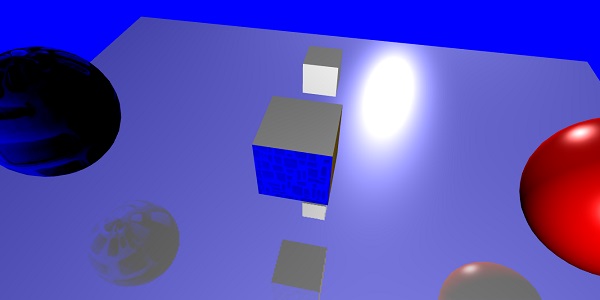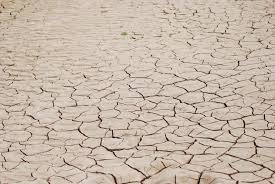
- BabylonJS - Home
- BabylonJS - Introduction
- BabylonJS - Environment Setup
- BabylonJS - Overview
- BabylonJS - Basic Elements
- BabylonJS - Materials
- BabylonJS - Animations
- BabylonJS - Cameras
- BabylonJS - Lights
- BabylonJS - Parametric Shapes
- BabylonJS - Mesh
- VectorPosition and Rotation
- BabylonJS - Decals
- BabylonJS - Curve3
- BabylonJS - Dynamic Texture
- BabylonJS - Parallax Mapping
- BabylonJS - Lens Flares
- BabylonJS - Create ScreenShot
- BabylonJS - Reflection Probes
- Standard Rendering Pipeline
- BabylonJS - ShaderMaterial
- BabylonJS - Bones and Skeletons
- BabylonJS - Physics Engine
- BabylonJS - Playing Sounds & Music
BabylonJS - Mirror and Bump Texture
With mirror texture, you get mirror like reflection of the meshes created.
Syntax for Mirror Texture
mirrorMaterial.reflectionTexture = new BABYLON.MirrorTexture("mirror", 512, scene, true); //Create a mirror texture
mirrorMaterial.reflectionTexture.mirrorPlane = new BABYLON.Plane(0, -1.0, 0, -10.0);
Bump texture creates bump and wrinkles on the surface of the meshes the material is attached to.
Syntax for Bump Texture
bumpMaterial.bumpTexture = new BABYLON.Texture("images/btexture1.jpg", scene);
Demo
<!doctype html>
<html>
<head>
<meta charset = "utf-8">
<title>BabylonJs - Basic Element-Creating Scene</title>
<script src = "babylon.js"></script>
<style>
canvas {width: 100%; height: 100%;}
</style>
</head>
<body>
<canvas id = "renderCanvas"></canvas>
<script type = "text/javascript">
var canvas = document.getElementById("renderCanvas");
var engine = new BABYLON.Engine(canvas, true);
var createScene = function() {
var scene = new BABYLON.Scene(engine);
scene.clearColor = new BABYLON.Color3(0, 0, 1);
var light = new BABYLON.PointLight("Omni", new BABYLON.Vector3(10, 10, 50), scene);
var light2 = new BABYLON.PointLight("Omni", new BABYLON.Vector3(10, 10, -20), scene);
var camera = new BABYLON.ArcRotateCamera("Camera", -Math.PI/2, Math.PI/4, 25, BABYLON.Vector3.Zero(), scene);
camera.attachControl(canvas, true);
var sphere1 = BABYLON.Mesh.CreateSphere("Sphere1", 16.0, 10.0, scene);
var box1 = BABYLON.Mesh.CreateBox("box", 5.0, scene);
var sphere3 = BABYLON.Mesh.CreateSphere("Sphere3", 16.0, 10.0, scene);
var box2 = BABYLON.Mesh.CreateBox("box1", 3.0, scene);
sphere1.position.x = -20;
box1.position.x = 0;
sphere3.position.x = 20;
box2.position.z = 10;
// Mirror
var plane = BABYLON.Mesh.CreatePlane("plan", 70, scene);
plane.position.y = -10;
plane.rotation = new BABYLON.Vector3(Math.PI / 2, 0, 0);
var bumpMaterial = new BABYLON.StandardMaterial("texture1", scene);
bumpMaterial.diffuseColor = new BABYLON.Color3(0, 0, 1);//Blue
bumpMaterial.bumpTexture = new BABYLON.Texture("images/btexture1.jpg", scene);
var simpleMaterial = new BABYLON.StandardMaterial("texture2", scene);
simpleMaterial.diffuseColor = new BABYLON.Color3(1, 0, 0);//Red
var textMat = new BABYLON.StandardMaterial("texture3", scene);
textMat.diffuseTexture = new BABYLON.Texture("images/btexture1.jpg", scene);
// Multimaterial
var multimat = new BABYLON.MultiMaterial("multi", scene);
multimat.subMaterials.push(simpleMaterial);
multimat.subMaterials.push(bumpMaterial);
multimat.subMaterials.push(textMat);
//Creation of a mirror material
var mirrorMaterial = new BABYLON.StandardMaterial("texture4", scene);
mirrorMaterial.diffuseColor = new BABYLON.Color3(0.4, 0.4, 0.4);
mirrorMaterial.reflectionTexture = new BABYLON.MirrorTexture("mirror", 512, scene, true); //Create a mirror texture
mirrorMaterial.reflectionTexture.mirrorPlane = new BABYLON.Plane(0, -1.0, 0, -10.0);
mirrorMaterial.reflectionTexture.renderList = [sphere1, box1, sphere3, box2];
mirrorMaterial.reflectionTexture.level = 0.4;//Select the level (0.0 > 1.0) of the reflection
box1.subMeshes = [];
var verticesCount = box1.getTotalVertices();
box1.subMeshes.push(new BABYLON.SubMesh(0, 0, verticesCount, 0, 6, box1));
box1.subMeshes.push(new BABYLON.SubMesh(1, 1, verticesCount, 6, 6, box1));
box1.subMeshes.push(new BABYLON.SubMesh(2, 2, verticesCount, 12, 6, box1));
box1.subMeshes.push(new BABYLON.SubMesh(3, 3, verticesCount, 18, 6, box1));
box1.subMeshes.push(new BABYLON.SubMesh(4, 4, verticesCount, 24, 6, box1));
box1.subMeshes.push(new BABYLON.SubMesh(5, 5, verticesCount, 30, 6, box1));
plane.material = mirrorMaterial;
sphere1.material = bumpMaterial;
sphere3.material = simpleMaterial;
box1.material = multimat;//simpleMaterial;
return scene;
};
var scene = createScene();
engine.runRenderLoop(function() {
scene.render();
});
</script>
</body>
</html>
Output
The above line of code generates the following output −

In this demo, we have used an image called btexture1.jpg. The images are stored in the images/ folder locally and are also pasted below for reference. You can download any image of your choice and use in the demo link.
images/btexture1.jpg
Following is the image used for bump structure −

Explanation
First, we will create a standard material and to that we will apply bumptexture as follows −
bumpMaterial.bumpTexture = new BABYLON.Texture("images/btexture1.jpg", scene);
Create a standard material and apply mirror texture to it as follows −
mirrorMaterial.reflectionTexture = new BABYLON.MirrorTexture("mirror", 512, scene, true); //Create a mirror texture
For the same standard material, create a mirror plane and add the meshes to it which you need to see through the mirror as follows −
mirrorMaterial.reflectionTexture.mirrorPlane = new BABYLON.Plane(0, -1.0, 0, -10.0); mirrorMaterial.reflectionTexture.renderList = [sphere1, box1, sphere3, box2]; mirrorMaterial.reflectionTexture.level = 0.4;//Select the level (0.0 > 1.0) of the reflection